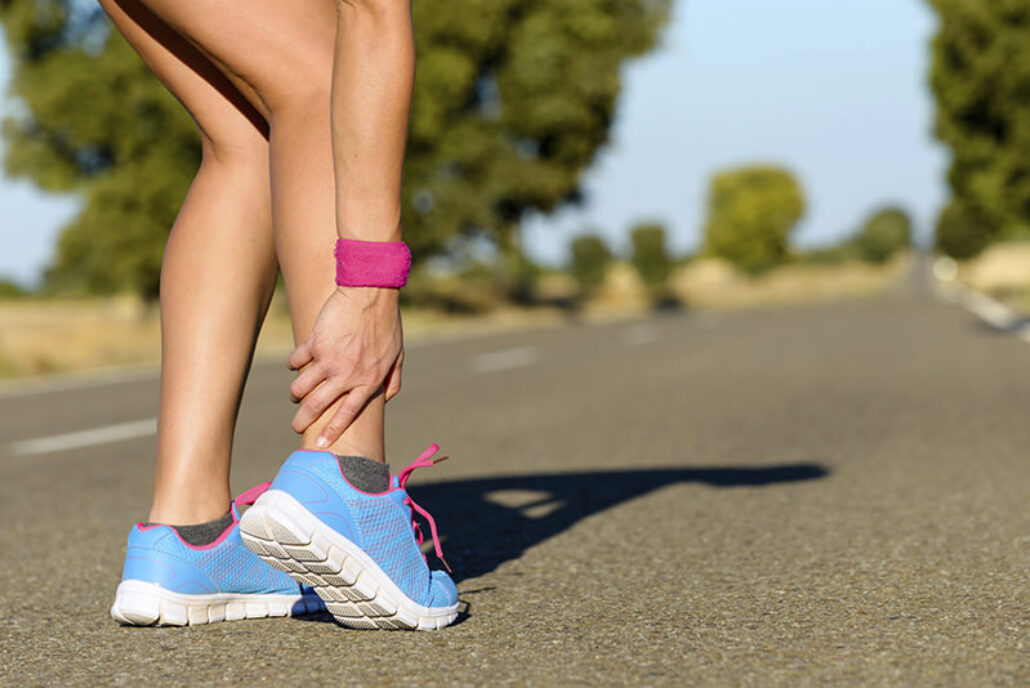A pain in your heel can put a real wrench in your training program. Dr. Scofield explains the most common running errors leading to Achilles tendinopathy, and tells you how to avoid them.
Over the past few decades, there has been a healthy increase of interest in recreational and competitive sports. Unfortunately, incidence of Achilles tendinopathy has risen with athletic enthusiasm. Achilles tendinopathy is caused by repeated tiny injuries to the Achilles tendon. The condition causes pain, swelling, stiffness and weakness of the Achilles tendon joining the heel bone to the calf muscles.
Symptoms of Achilles Tendinopathy
Typically, the symptoms of Achilles tendinopathy come on gradually. Runners may experience swelling in the tendon. They may also experience pain with running, and pain for their first few steps when they get up in the morning. At first, runners will notice pain in the tendon toward the end of their run. If time goes by without treatment, the pain becomes more of a problem. Ultimately, injured runners can’t do the mileage they were planning.
Causes of Achilles Tendinopathy in Runners
“I’d say that eighty percent of tendon injuries like Achilles tendinopathy arise as the result of training errors,” says Dr. Scofield. “Usually the athlete has changed something in their routine too quickly or started doing something differently. They changed their workout intensity, they changed their running surface, they changed their shoes or their mileage—they changed something.”
Achilles tendinopathy or injury can also be related to running mechanics. “Overstriding—taking long strides—is one common mistake runners make. This increases the deceleration impact on your heel and puts you at higher risk of injury,” Dr. Scofield explains. “One of the simplest things runners can do is to work on reducing the length of their stride and increasing their running cadence. This reduces the deceleration impact force to the foot, ankle and all the way up the leg thereby reducing injury risk. Ideally, a runner should have 170 to 190 footfalls per minute, or about 3 footfalls per second. That’s a faster cadence than what a lot of people run, but it’s probably one of the simplest ways to avoid running injuries.”
Running Tips to Reduce the Risk of Achilles Tendinopathy
Dr. Scofield advises runners to be very gradual when they introduce a change into their training program to help prevent Achilles tendinopathy. “If you are planning to increase your mileage to prepare to run half a marathon, have a plan for a very gradual ramping up. A good rule of thumb is to increase mileage by no more than 10% per week,” he says. “Your body needs consistency to avoid injury. Studies show that running between four and six times a week makes you less prone to injury than running seven days a week, or running three days a week. Be consistent, and give your body a little rest as well.”
Summit Orthopedics offers personalized foot and ankle expertise
Our fellowship-trained foot and ankle physicians understand that your mobility depends on the health of your feet and ankles. If you have suffered an injury or are experiencing symptoms that make walking painful, our team of foot and ankle specialists can help with conservative treatment, seasoned surgical teams, and expert rehabilitation support. Summit Orthopedics specialists have the expertise to evaluate your discomfort and develop a plan to quickly and safely get you back on your feet and on your way.
Start your journey to optimal foot health. Find your foot and ankle expert, request an appointment online, or call us at (651) 968–5201 to schedule a consultation.
Summit has convenient locations across the Minneapolis-St. Paul metro area, serving Minnesota and western Wisconsin. We have state-of-the-art centers for comprehensive orthopedic care in Eagan, MN, Plymouth, MN, Vadnais Heights, MN, and Woodbury, MN, as well as additional community clinics throughout the metro and southern Minnesota.
More resources for you
- Ask Sam Olson: Should Running Shoes Be Based On Arch Shape?
- Ask Sam Olson: Does My Running Shoe Matter?
- Ask Dr. Scofield: Guidelines For Transitioning To A New Running Shoe

